One of the most commonly heard pieces of social advice is to “just be yourself!”
First of all, just be myself? As if it were that easy.
And second, what does “being myself” even mean?
The skill of “being yourself” is one of the most difficult lessons to learn, and it’s something that many people struggle with throughout their entire lives. However, being yourself is actually a very important component of your quality of life and overall happiness.
It will take time, courage, and a significant amount of internal reflection, but learning how to be yourself is one of the most valuable you skills you can develop.
1. What does “being yourself” even mean?
Let’s start with the short answer:
Being yourself means knowing and expressing your true thoughts, opinions, preferences, and beliefs through your words, actions, and attitude.
Easier said than done, right?
If we’re being honest with ourselves, sometimes we don’t even know what our true “thoughts, opinions, preferences, and beliefs” are anymore. And even if we did, being open about them would surely scare away all of our friends, wouldn’t it?
This is the most common dilemma when it comes to the idea of “being yourself,” and it’s something that everyone could relate to if they were to take a peek into the deepest corners of their hearts where their insecurities live.
So how can you determine if you’re one of the many people who struggle with being yourself?
2. Pop Quiz: Are You Comfortable Being Yourself?
Look at the following list of reflection questions from Merry Lin, author of The Fully Lived Life.2 Be honest with yourself as you mentally respond. If you can relate to some of the issues the questions present, then there’s a good chance that being yourself is something you have trouble with.
- Has there ever been a time in your life when you forced yourself to be “on” even though you didn’t feel like it?
- Have you ever found it difficult it to be honest with yourself about how you really feel?
- If I were to ask you to describe yourself, could you talk about your strengths and weaknesses with confidence? (In other words, do you know who you really are?)
- Are you always the same in how you act, regardless of the situation you’re in?
- When you’re around others, do you ever feel strained and uncomfortable and find it hard to relax?
- Has anyone ever told you that they thought you were one way, but when they got to know you better, realized you were another way?
- Has anyone ever commented on how you act differently around various people?
- Do you ever pretend to like someone you really don’t?
- What might some of your masks be? The “I’ve got it all together” mask? The “I’m a victim” mask? Think about different situations in your life- work, school, church, home, with friends, with family, etc. What masks might emerge during those times?
A few more signs that you struggle to be yourself include:
- You tend to take on other people’s behaviors, mannerisms, etc. and you behave differently with each different group of people depending on how they behave
- You’re afraid to disagree with someone or state an opposing opinion
- You pretend to like certain things that you don’t actually like because you don’t want to be “different”
- You watch the way people dress, the way they do their hair, what music they listen to, etc. and copy those things even if they aren’t what you actually like or are comfortable with
- You avoid having people come over to your house because they would learn too much about “the real you”
- You tend to think that most other people are better than you
- You feel the need to act happy when you’re not because you don’t want to talk to anyone about what’s going on
If you can relate to many of these things, then being yourself is likely an insecurity of yours. But don’t worry- we’re going to show you exactly how you can become more comfortable being yourself in any situation.
Click here if you want to learn how to not be socially awkward.
First let’s look at a synonym for “being yourself” that’s much easier to wrap our minds around.
3. Authenticity = Honesty ÷ Discretion
Authenticity is being yourself in a nutshell.
Some people mistakenly believe that if they’re going to be themselves, they have to eliminate their verbal filter and say everything that pops into their heads. But this isn’t the case; in fact, if you’re looking to decimate your friend group and start fresh, this would be the easiest way to do it.
Not saying aloud every thought that crosses your mind does not mean you’re dishonest or “fake,” it means you have discretion. And discretion is a very important part of being socially successful.
To be authentic means to be honest about what you think, feel, and believe in a respectful and appropriate way and with regards to the social setting and circumstances.
This is why we’ve listed the formula for authenticity as follows:
Authenticity = Honesty ÷ Discretion
“Honesty and discretion are twin virtues that work together while they moderate each other,” says Dr. Mark D. White, columnist for Psychology Today. 1 “You don’t want to be dishonest (or truly deceitful) but neither do you want to be completely forthright.”
Says confidence coach Susie Moore, “Don’t let [being yourself] be an excuse for not making an effort. Maturity means taking stock of the situation you are in and making others around you feel comfortable… Ask yourself, ‘Which is the coolest and kindest version of myself to be right now?'”3
In other words, you don’t have to stop being yourself to be socially versatile– you can simply express the part of yourself that is most fitting for the current social situation.
4. How to be yourself: A practical perspective
Now that we understand that being ourselves is a balance between being honest about what we think and feel and using discretion to determine when, where, and how to express that honesty, let’s talk about what “being yourself” actually looks like on a day-to-day level.
As Moore points out, there are many facets of your personality, so being yourself doesn’t mean that you behave exactly the same way all the time.
What it does mean is that you make your everyday decisions based on those things you think, feel, and believe. If your friends want to do something that you’re morally opposed to or simply don’t enjoy, you speak up about it and potentially even go home or do something else if they don’t change their minds.
Says Dr. Mark White, psychologist, “Another way to think about [being yourself] is that it has less to do with expressing your true self…and more to do with not forcing yourself to be someone else.”1
Being yourself looks like choosing your clothing, hairstyle, college major, career, significant other, car, and home decor based on what you like and think is right and good– not based on what other people are doing or what your friends like and think is best.
That isn’t to say that you shouldn’t seek advice from people you trust and believe to be wise; it simply means that you take your own beliefs and preferences into consideration when making decisions and don’t make mindless choices that copy others unless you genuinely want to.
Being yourself also doesn’t mean it’s okay to do whatever you want without considering its impact on other people. Everyone should be continually seeking to better themselves; being yourself is not an excuse to be a bad person.
When you are truly comfortable being yourself, you will choose to spend your time with people who appreciate your sense of humor, your hobbies, your opinions, and your preferences; you won’t have to be afraid to tell the truth about what you think or change the things you like and dislike just to fit in.
“Okay, so being myself sounds pretty great. But how exactly do I do it?”
Let’s find out.
5. Being Yourself: How to Do It
Now that we know what “being yourself” actually means and what it looks like on an everyday level, it’s time to get into the good stuff: how it’s done.
Says personality psychologist Dr. John D. Mayer, “Our personality is the sum of our mental processes. Its job is to…help us express ourselves in our surroundings. We draw on our personality to manage our health and safety, to find the right environments to be in, and to draw on group alliances for protection, companionship, and a sense of identity. To succeed, our personality must guide our actions in each of these areas– and as we act, leave behind traces of who we are.“4
In short, our personality determines the way that we act; so if we are to truly be ourselves, we must first determine the aspects of our own personalities.
6. Who Are You?
The first, and most time consuming, step in the process of learning to be yourself is simply figuring out who you are. For those who have long struggled to be themselves around other people, it can be difficult to know which are their own opinions and preferences and which are the opinions and preferences they have adopted from other people.
Like we read in the quote above, you must develop and know your personality in order to authentically convey to the world who you are.
First, what are your morals and values? What do you believe is right and wrong, and why? Where do you stand on matters of ethics? Matters of politics? Matters of religion?
These are very complex topics and this is why the process of figuring out who you are can be time consuming.
While going on a “journey of self-discovery” sounds like a cliche, in reality this is the most important journey of your life. Knowing what you stand for will determine every decision you make, every action you take, and every statement that comes out of your mouth for the rest of your life. It’s important to know why you believe what you believe so that you can stay true to your values, whatever they may be.
Next, what are your opinions and preferences? What music do you listen to when you’re alone in your car, that you previously would never have told anyone you enjoy? What type of movies do you get excited about when you see a preview for a new release? What books would you read over and over? What foods would you choose to eat for your very last meal? Which of your possessions are most valuable to you, and why?
Sometimes this might require you to sit down and watch a bunch of movies, or pick books from a variety of different categories to read. It might mean going to different types of restaurants and ordering new things, or searching Spotify for music in new and different genres.
Trying new things that you never would have thought to try will allow you to form an opinion one way or the other, and it will also enable you to confidently tell people what you think about things when it comes up in conversation because you will have actually tried them with the intention of forming your own unique opinion.
Another way to analyze your preferences is by making a list of the things you frequently do with your friends or social circle. For each item on the list, think about what you actually like and dislike about that event or activity.
Are there any things on the list that you participate in simply because “it’s what everyone else does”? Are there any activities or events on the list that make you uncomfortable, and why? In which situations or events are you most comfortable, and why?
Finally, what is your personality type? Are you introverted or extroverted, or an ambivert (a combination of both)? How does your personality type impact your social preferences?
Some resources for determining (and understanding) your personality type include:
- Extroversion/Introversion Test by Psychology Today
- List of Personality Trait Quizzes by Psychology Today
- Articles: Introverts and Extroverts by Psychology Today
7. The (Wo)Man in the Mask
If you look back at the list of reflection questions from Merry Lin, you’ll remember that question #9 asks you to identify your different “masks.”
Your “masks” are the different facades or inauthentic personalities that you put on to make people like you, to fit in better with certain people, or to hide the real you for any number of other reasons.
Once you’ve determined who you really are by following the steps above, the next stage of learning to be yourself is to figure out exactly when and why you put on your masks so that you can begin to make changes.
Says confidence and communication coach Eduard Ezeanu, “You need to identify the specific ways that you are inauthentic in social interactions and then correct them one by one.”5
One way to identify these masks is by looking back at the list you made earlier of events and activities you attend with your friends. Being honest with yourself, do you think you act differently at the events/activities where you are uncomfortable than you do at the events/activities where you are most comfortable?
If so, take a few minutes to write down or think about exactly what you do differently in those situations. This is one of your masks.
If you have more than one social circle or group of friends, do you talk or behave differently with one group than you do with the other?
Behaving differently with different people is not necessarily a bad thing as long as you’re being yourself with both groups. Remember, your personality has many different aspects, so just because you’re different with one group than you are with the other doesn’t mean that you aren’t being yourself.
But it’s important to be sure that if you’re behaving differently with different people, the different ways you’re acting are still true to yourself and not masks or “pretend” personalities that will help you fit in better despite not being aligned with what you really think/feel/believe/want.
For example, you will certainly act differently around your boss than you do around your best friend. And you will probably act differently around your best friend than you do around your family. And you probably act differently around your family than you do with a complete stranger.
This is normal; but again, be sure that each of the different ways you are acting are true to yourself, and be intentional about identifying the behaviors that are ingenuine.
Once you have identified your masks, it’s crucial to determine the reason why you feel compelled to put on those masks in each situation.
This leads us to take a look at the reasons why people are not comfortable being themselves so that you can address the root cause behind your struggle with authenticity.
8. Beneath the Mask: Insecurity and Inferiority
Typically when we put on a mask in a certain situation it’s out of fear that the real us won’t be good enough in some way: we won’t be likable, we won’t fit in, they’ll think we’re weird, we won’t make friends, we’ll embarrass ourselves, they’ll make fun of us behind our backs, etc.
These are just a few examples of the many common fears that people experience in social situations, and they always stem from 1) our insecurities, which lead to 2) the sense that we’re inferior to the people around us.
Our response to these fears is to pretend to be someone else– someone better, more likable, more socially acceptable, more “normal,” more similar in personality to the other people. Right?
But once we find ourselves doing this once, it becomes all too easy to do it again. And again. Until suddenly, that false personality is who they think you really are, and you can’t change now or they’ll know you were a fake.
If we’re ever going to become comfortable being ourselves, we must first address our insecurities and inferiorities.
How do we do that?
First, determining your own values and beliefs plays a large role in your confidence. When each of your decisions is influenced by a set of values that you firmly adhere to, you will be more confident in your choices because you know there is a good reason behind them.
For example, when I chose to become a teacher there were many things said to me that would have caused me to doubt myself had I not been so firmly rooted in my reasons for my decision.
“You know you’ll barely make any money, right?”
“If you can’t do, teach.”
“Have fun wiping noses and opening ketchup packets. Teaching is glorified babysitting.”
“You’re too smart for that– you should be a lawyer or a doctor.”
“You’re going to teach in this city? You’ll never make a difference. It’s too corrupt.”
I received comments like this throughout all four years of college and even after I began teaching. But because I was absolutely sure that my calling at that time was to help underprivileged children and families through teaching, I wasn’t swayed by other people’s criticism. I was confident in my decision because I knew I could back it up with my beliefs and values.
Having a firm set of values and beliefs will give you the confidence you need to make decisions and stand by them, even when called into question. You will not be tempted to be someone you’re not if the person you really are is someone you’re proud to be because your life is aligned with your personal values.
The second way to boost your confidence and avoid feeling inferior to others so that you can be comfortable being yourself is to eliminate negative self-talk.
For many people, negative self-talk (or the critical, belittling thoughts you think toward yourself) has become such a constant part of their mentality that they don’t even realize they’re doing it anymore.
Have you ever found yourself thinking things like this?
- “Ugh, I’m such an idiot.”
- “I’m so ugly/fat/stupid.”
- “I’m so bad at this.”
- “I can’t do anything right.”
- “Nobody likes me.”
Each of these are examples of negative self-talk, and they are extremely damaging and only serve to fuel your poor self-esteem and inferiority complex.
It’s important to recognize when you are having these type of thoughts so that you can replace them with positive affirmations.
Positive affirmations are like a personal mantra of sorts. Write down at least five things that you like about yourself, whether it’s related to your looks, your personality traits, your character qualities, or your accomplishments.
Writing down your affirmations and/or saying them aloud to yourself every single day will help them to replace the negative self-talk with which you batter yourself.
Each time you find yourself having a negative thought towards yourself, take that thought captive.
By this I mean mentally grab hold of that thought and think “No, that’s not true.” Then recite one or all of your positive affirmations to replace the derogatory thought.
Some examples of positive affirmations include:
- I’m a good friend
- I’m a hard worker
- I have a good sense of humor
- I am a loyal employee
- I’m great at my job
- I have overcome many obstacles
- I am loved by my family and friends
- I’m a valuable part of my community
Over time, you will begin to truly believe these positive things about yourself, and then you can replace those positive affirmations with new ones so that the cycle can continue.
Eliminating negative self-talk and reminding yourself of your many positive qualities will help you to have the confidence you need to stop feeling inferior to others and begin being yourself around others.
Read more on handling feelings of inferiority here.
9. Making the Change
Let’s take a second to review:
- We know that being ourselves is a balance between honesty about our thoughts and feelings and discretion regarding when and how to express them
- We know that we must learn who we are before we can truly be ourselves, and we do this by figuring out our morals/values, our preferences and opinions, and our personality types.
- We know that we must identify the different “masks” that we wear and when we wear them so we can begin replacing those masks with genuine behaviors.
- We know that the reasons we wear “masks” are insecurity and inferiority, which we can remedy by basing our life decisions on a set of morals/values that we strongly believe in and replacing negative self-talk with positive affirmations.
Now we must use what we know to begin making a change in our social behaviors. “You do this by setting small change goals for yourself and working on achieving them,” says Ezeanu.5
First, take a look at the masks you’ve identified in your social life and begin listing specific genuine actions you can take to to be more yourself in those situations.
For example, if your friends enjoy going to clubs and parties on the weekends but the real you isn’t that into the party scene, suggest a different activity next time it comes up.
“Hey guys, why don’t we go bowling this weekend instead?” or “What would you all think about getting dinner and then checking out the new shopping center across town?”
If they aren’t open to changing the itinerary, it may be a good idea to sit down with one or two people you’re close with to discuss your true feelings about the situation.
If they’re unreceptive and unwilling to make any compromises to make you more comfortable, it may be time to find some new friends with whom you can truly be yourself.
If you struggle with pretending to agree with things that you actually disagree with or pretending to like things that you really don’t, set a goal to be more honest about your thoughts when those topics come up.
Don’t be afraid to correct yourself. If you slip into the old habit of going along with what someone else has said, stop yourself and say, “Actually, I really don’t like that. I don’t know what I was thinking before. I prefer ________ instead,” or “You know, I actually feel differently about that. I think __________.”
If the people you’re spending time with are worth your friendship, they will be receptive to your different thoughts and opinions and will value you for who you are. This will further improve your confidence when you begin to see that the real you is loved and accepted just as much, if not more so, than the you who was previously wearing a mask.
Again, if the real you is not well received, it may be time to consider making some new friends who will like you for who you are– and they are out there!
The ability to be yourself is necessary for your mental and emotional wellbeing. It can be difficult to become comfortable expressing your true thoughts, beliefs, and opinions, especially if you’ve forgotten what they are in the first place!
Getting to know yourself , identifying your masks, improving your confidence, and replacing your false social behaviors with genuine ones are the key elements to being yourself around others.
Do you struggle with being yourself? We hope you find this guide helpful and look forward to hearing your success stories in the comments!


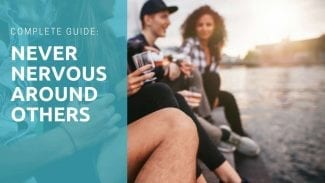
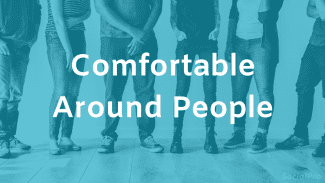
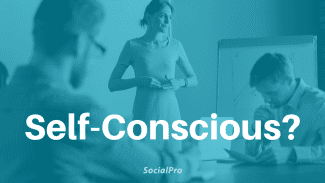
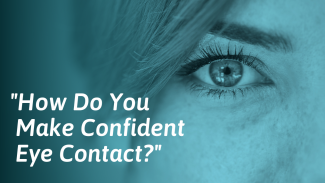
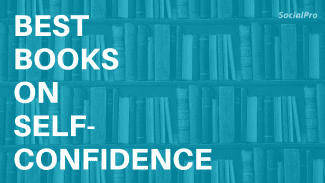

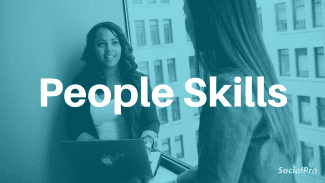
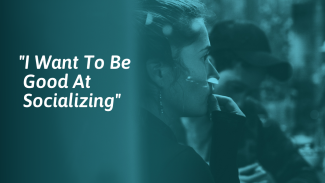


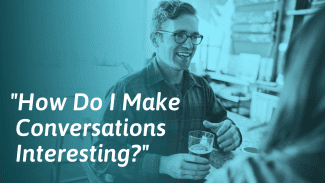
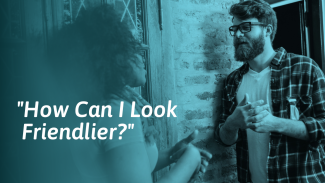

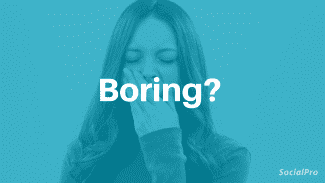
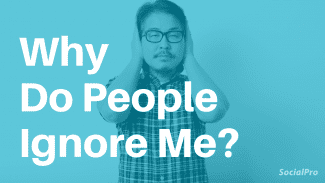
Hey, I agree about not trying to impress everyone. People see through such blatant attempts at courting favour. Instead it’s always better to be the best you that you can be.. if this is the case then people won’t fail to be impressed.